SMITHSONIAN CENTER FOR FOLKLIFE & CULTURAL HERITAGE
When Escaping Reality Helps Define Identity: Expression and Empowerment in the Cosplay Community
It is probable that Western fans learned the term “cosplay” from their fellow fans in Japan, and the word has now evolved into a more general term for dressing up as characters.
:focal(600x400:601x401)/https://tf-cmsv2-smithsonianmag-media.s3.amazonaws.com/filer_public/b1/e6/b1e6402b-15ab-4609-8bde-bfc1f709e0a2/cosplay-gate.jpg)
When I was twelve, my grandmother, a prolific seamstress, helped me sew my first cosplay costume. Her elegant fingers guided my inexperienced hands as she taught me how to identify the right side of a soft satin weave, cut a pattern to my size, and thread a sewing machine. Together, we replicated the traditional, black Japanese kosode robe, pleated hakama trousers, and white haori jacket worn by the character Tōshirō Hitsugaya in the fictional Japanese manga and anime series Bleach. I wore this homemade costume to my first of many anime and sci-fi conventions.
As a young girl, I didn’t think twice about my desire to dress up as one of my favorite male characters. Back then, I didn’t know how to alter my appearance with a wig, makeup, colored eye contacts, or by binding my chest—skills I integrate into cosplaying now as an adult. However, as soon as I stepped inside the convention hallways wearing my first cosplay, the convention community recognized me as one of them: a fellow anime fan and cosplayer.
At my first convention, many cosplayers were far more skilled than I was. Some carried five-foot-tall, handmade props or wore body armor made from EVA foam. Regardless, friendly attendees stopped to talk about Bleach or compliment my outfit. Because of our shared interests, con-goers with varying levels of creativity, gender expression, and costuming skills communed together in one place. In a time when being a “nerd” was uncool, I felt validated and elated to show my love for the character and anime.

To cosplay (a Japanese portmanteau of “costume” and “play” coined by Nobuyuki Takahashi in 1983), a fan of any fictional character dresses up to look like them. While the term started in Japan and spread through fans dressing up as manga and anime characters at events like Comiket, leading television shows and magazines to feature the subculture, this costume tradition is much older. According to Nina B. Huntemann in the book Gaming Representation: Race, Gender, and Sexuality in Video Games, the first cosplay at a fandom event likely occurred at the 1939 science fiction convention WorldCon, where people wore handmade “futuristic costumes.”
By the 1990s, Japanese enthusiasm for anime and manga crossed the Pacific, birthing anime conventions in the United States. It is probable that Western fans learned the term “cosplay” from their fellow fans in Japan, and the word has now evolved into a more general term for dressing up as characters, while still retaining some nuance toward East Asian media.
Cosplayers learn their costume, props, makeup, and acting skills from one another or through online tutorials. In addition to attending events, they may post photos or videos online of themselves in costume posing or acting in character. Professional cosplayers make money by creating social media content, receiving commissions for costumes and wigs, modeling for vendors at events, participating in contests, selling products like photos, or making sponsorship deals.
Some cosplay groups do charity work, like the 501st Legion, which is a volunteer-only, international fan-based costuming organization of over 14,000 members dedicated to celebrating Star Wars through accurate replicas of villain costumes. Legion members have participated in a variety of charity efforts around the world, from fundraising for the World Central Kitchen to partnering with organizations like the Make-a-Wish Foundation.
While there are clubs and conventions dedicated to it, cosplay is not limited to a specific time and place. Zip up a costume and hairspray a wig for a TikTok dance alone in your room. Or plan a group cosplay for Halloween—maybe you’ve already been doing it for years without using the term. There also aren’t any rules about making the costume, wig, or props yourself—feel free to order a complete set online.
“The main reason why I love cosplay so much is because it provides some sort of escape from reality,” shared Morgan Looney, a special effects makeup artist and cosmetology student who has gained confidence through the cosplay community. “As someone who hasn’t been the strongest person and has often felt alone in the world, cosplay and going to conventions brought me into a whole new atmosphere of supportive and accepting people that I didn’t know existed.”
Cosplaying strong characters whom she looks up to has boosted Morgan’s confidence in her everyday life. “I started not caring what other people thought of me and my interests. If it makes you happy, it doesn’t matter what other people think of you.”
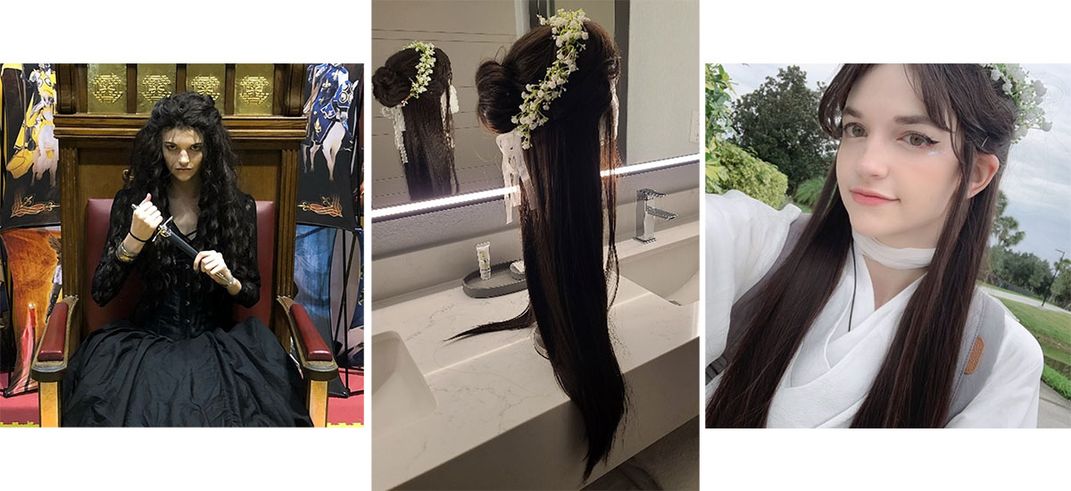
While meeting cosplayers at conventions and through my research, many told me that when they’re with other cosplayers online or at conventions, they find it easier to express parts of themselves they ordinarily keep hidden.
“I consider cosplay as safe—it’s like a shell where I can be attractive, sexual, feminine,” explained Ace, a cosplayer from China currently living in California. “And the real me is inside there somewhere, but I’m safe. Because when you are looking at a cosplay picture and then you look at the real me, oftentimes you don’t even recognize that it’s me. I look so vastly different in a cosplay picture. I don’t even recognize myself.”
However, many are painfully aware that there is still work to be done to combat harmful behavior in our community. The biggest issue Cas Campbell (aka C.G. Myth), a Florida-based cosplayer, writer, and poet, faces in the cosplay community is ableism.
“As a young adult, I have more problems with my disability than when I was younger,” they said. “And this is something I face both in and out of conventions. I’ve had people at cons accuse me of faking my disability and ask me what’s wrong with me because I use a cane when walking long distances. People have also accused me of using my cane as a prop. I shouldn’t have to list to you my medical history for you to believe I should be using this piece of equipment. I know a lot of other cosplayers who face this stuff. It sucks that it seems to be a consistent thing. Just because the character is able-bodied doesn’t mean that I am.”
Looking Inward—Gender, Confidence, and Consent
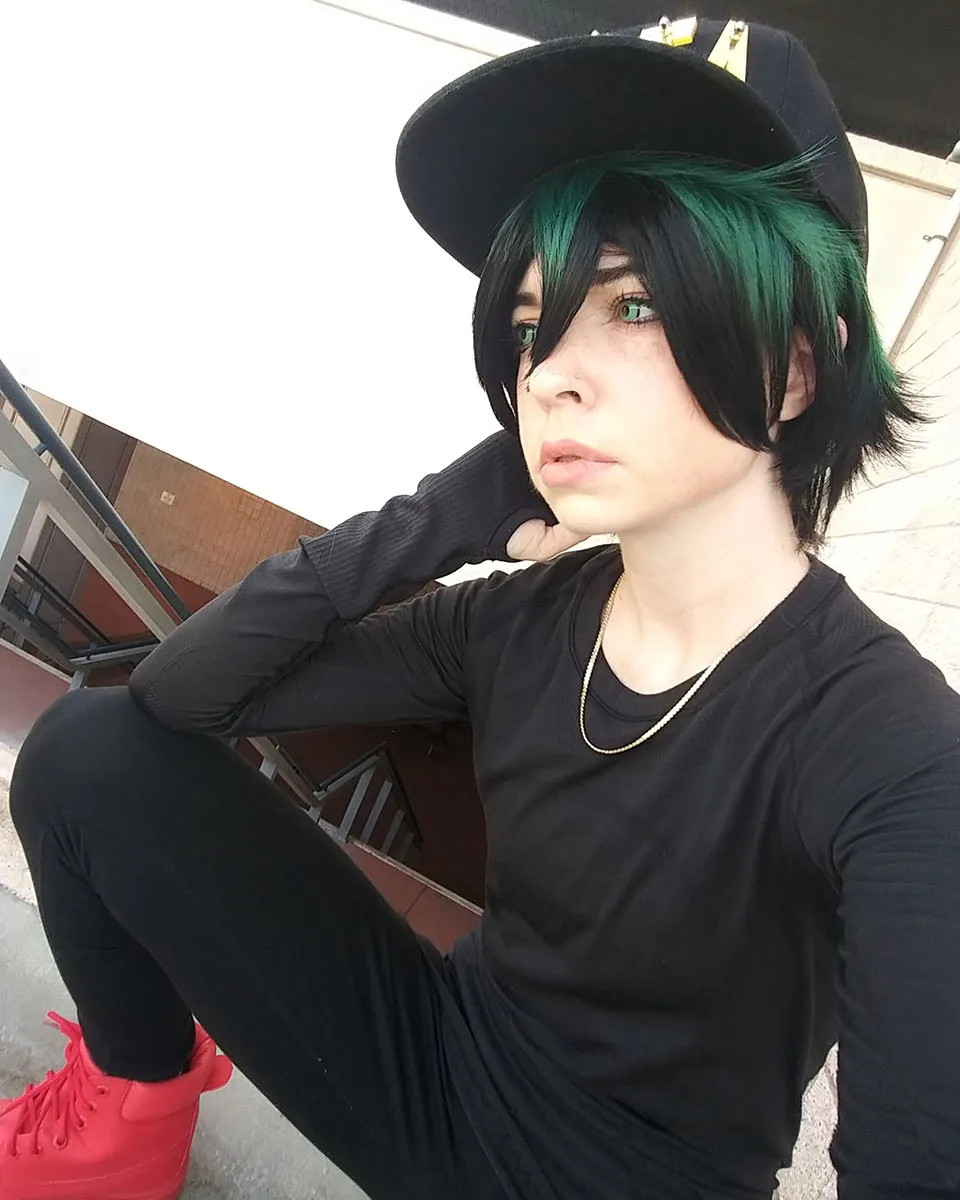
While writing about this community and talking with fellow cosplayers, I reflected on why I enjoy cosplaying for conventions and Instagram. Despite being a woman, I’ve only been interested in cosplaying male characters. I believe the reason has to do with the type of characters I admire and the freedom to present myself as a different gender. While I could play with gender through other hobbies, cosplay lets me simultaneously express my love for anime and video games and meet fellow fans in a space where I won’t be judged for my interests.
There are common factors that draw me to the male characters I cosplay: their journeys to become more confident in themselves, their energetic and playful attitudes, and their comfort in their bodies and in how they exude femininity. Not only can I explore what different forms of masculinity may outwardly look like, but I also gain confidence when I’ve successfully “pulled off” looking like the character—even if it’s my own rendition of him rather than an exact replica—through the makeup, photography, and wig techniques I’ve learned from cosplayers on Instagram over six years.
Many in the cosplay community blur gender lines. Through various types of costumes and embodying characters of different genders, cosplayers learn more about their own identities and those of other fans they meet while boosting their body confidence.
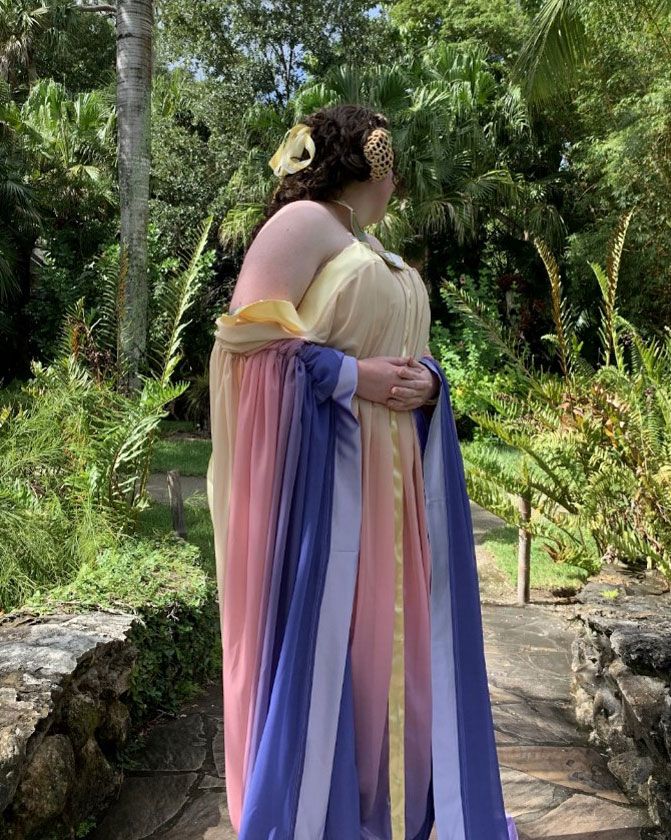
“Cosplay has been really important to me in figuring out my gender because I questioned it so much growing up,” Cas explained. “And then I got to a point where I could cosplay, and I cosplayed almost exclusively male characters for years and years because it was like: I’m cosplaying as a woman all the time in my everyday life.”
Cas explores their feminine side in cosplay, too. They’ve created costume designs that gender-bend male characters, imagining female counterparts. Without cosplay as a means to experiment with different types of clothing, Cas believes they wouldn’t have learned about their own gender fluidity.
Ace identifies as a queer woman and switches from she/her to they/them pronouns when in cosplay. She uses cosplay to work on her body confidence and as a statement to push against society’s expectations of women. At the same time, she faces criticism from social media users who comment that she doesn’t look enough like the characters.
This type of criticism, Ace has witnessed, can turn into racism, such as claiming that a fan shouldn’t cosplay a character of a different skin tone. Many of us view this as going against the spirit of cosplay being for everyone. Ace also noticed differences between the cosplay communities in China and the United States. For example, she explained that in China, where there are few people of African descent, it’s common for Chinese cosplayers to darken their skin with makeup or photo edits to match a character. It is not considered problematic. As she became active in the United States community, she learned why such practices are unacceptable.
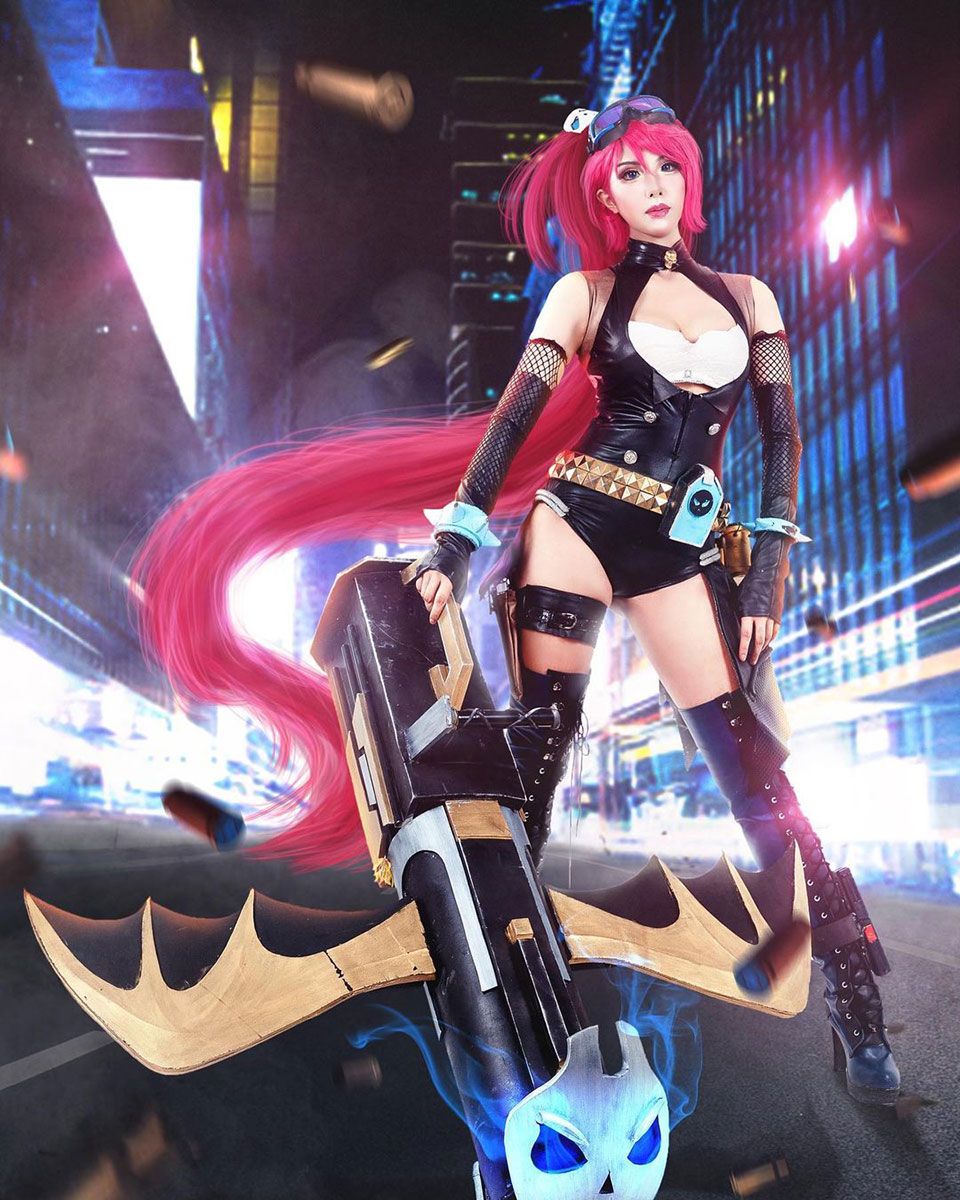
For a time, Ace hated it when other people considered her body attractive. She refused to embrace her feminine side. Through cosplay, she was able to improve her relationship with her own femininity by playing characters with a broad range of body types and backgrounds. However, because of the way a lot of anime exaggerates the female body, Ace feels pressure to measure up.
“Although I’m a feminist, constantly challenging [female stereotypes] and expressing my own queerness, cosplay still leads this anxiety back to me: not feeling confident about how my sexuality and body will compare to all of those big-breasted female characters,” she said. “It definitely poses a challenge for me. When I want to cosplay these characters, I face self-questioning, and I think that hinders me from exploring my full potential in cosplay.”
At her first comic convention, Ace felt encouraged by seeing people cross-dressing, not following the typical gender binary, and dressing as non-human and non-gendered characters. But as she grew older, she noticed it’s more common to see women cosplaying male characters than men cosplaying female characters. Ace heard con-goers call men “cross-playing” as female characters pathetic and accuse them of dressing up as girls in order to more easily approach and flirt with women.
“There’s a growing transphobia being embedded in the cosplay community,” Ace explained. “But that’s against the idea of cosplay because cosplay really should be disregarding your own reality—a fantasy world where you go there and don’t get limited by what you are like in reality. You take a one-day break from your own body, and you get to live someone else’s life. So, it’s really sad to see people starting to say, ‘Okay, but you don’t look like this character so you can’t cosplay that.’”
For many years, movements like Cosplay Is Not Consent have protested the sexual harassment of cosplayers, especially of women. As fictional media fans continue to use cosplay to express their love for a character or series, resist gender expectations, and wear outfits that show skin or scars they may not reveal in other settings, some are subjected to stalking, coercion, or sexist remarks from fellow fans and event staff.
These experiences happen across society, but cosplayers have come to value their art for how it builds confidence and community, leading us to work together toward a safer experience for all. The Cosplay Is Not Consent slogan affirms that wearing a costume, no matter what type of outfit or character it may be, is not consent for harassment, photography, and other unwanted attention.
Empowerment within the Virtual Cosplay Community
Fandom conventions involve more than dressing up as characters. In addition to events such as voice actor autograph sessions, video game tournaments, and workshops that teach skills like building scale models, there are panels hosted by cosplayers in costume and in character, such as skit performances, Q&A sessions, trivia, and group discussions about a series.
However, in 2020 and 2021, many conventions didn’t convene due to the COVID-19 pandemic. Some held virtual events instead, and cosplayers weren’t deterred from showing up to their computers in costume as well as supporting artist vendors and professional cosplayers who typically rely on in-person business. Some cosplayers became more active on social media to maintain the feeling of a larger community and stay up to date with their “con family.”
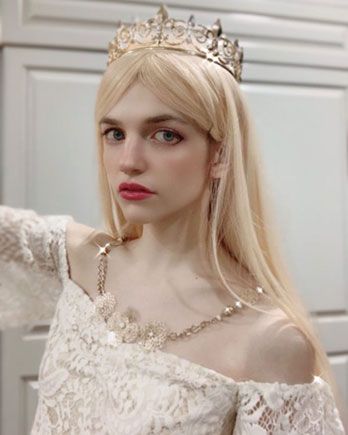
Morgan Looney cosplayed more often during the pandemic because it provided an escape and helped when she felt depressed. She turned to platforms like Instagram, Discord, and TikTok to stay connected with her con family and meet new cosplayers. Before this hobby, she wasn’t very interested in social media. However, when she started cosplaying, she immediately created a cosplay Instagram account, where she made friends with people from all over the world and ones close to home whom she visits in person.
“Social media in my life became a way to show other people my cosplays and inspire other people to start cosplaying,” she reported. “I have gotten messages from people who have told me that I inspired them to cosplay, and it makes me really happy.”
Ace also enjoys showing people her cosplays on social media because weeks or months of work go into the costumes, props, and photos, including photoshoots sometimes twelve hours long. After cosplaying for nine years, she feels like the practice is far more meaningful than the misconception of the hobby as a useless playtime.
“It’s a part of my personal growth, part of the way I connect with the rest of the world,” she said. “I think cosplay is a window for the world to see a part of me that’s outside of my appearance.”
By participating in cosplay through social media, Ace noted a different perspective in China: it’s more competitive and focused on professional, flawless photos rather than on the “play” aspect. She has stopped posting her cosplay pictures on Chinese social media, not only because of censorship but also the negative comments that accuse her of not being skinny or cute enough.
“I want to post in a community where people actually appreciate my work and don’t judge my body,” she said. “I’m not saying Instagram is the perfect heaven to post on. I’m sure there’s still a lot of negativity and criticism in the U.S. But I want to keep cosplay at a level where it makes me happy instead of bringing me more anxiety than I need.”
While Cas has their share of negative comments on TikTok regarding their body and gender-bent character cosplays, many users also express their admiration. Cas explained to me that since their first cosplay, they have gained almost a hundred pounds, partly because of an eating disorder.
“In our society, it’s so frowned upon to have certain bodily features,” Cas said. “But in cosplay, people are like, ‘No, give me plus-sized Oikawa! Give it! I want it!’ The community has all been so chill and open with it, so it’s been a body confidence booster in more ways than one. I think that’s the most important thing for me personally. As a plus-sized person, there is hardly any ‘rep’ in things like anime. Cosplay is for every body type.”
Beyond Cosplay
Through Instagram and cosplaying at conventions, I’ve gained my own con family whom I meet up with at events each year. The feeling of being myself while sharing my love for a character and the anticipation of connecting with other fans has kept me, and many others in the cosplay community, returning to the fandom convention and cosplay social media spaces year after year, transformed into characters different from our everyday selves.
“Cosplay has to be above and beyond the reality we’re in,” Ace firmly said. “It has to embrace the fantasy, both on the literal level of dressing up as a fictional character but also on the level of people not thinking that someone would spend so much time, money, and effort on making something even just for one day, one convention. And I think that’s the beauty of it.”
Ace shared how she wants to continue cosplaying as a way to express her own sexuality and gender and in opposition to the stereotypes about women. “I want to challenge you,” she said. “I want to bring a little more creativity in to show that there are people who can do different things with cosplay. I want people to be impressed with the bravery to challenge things that they previously didn’t think about.”
Her words took me back to a sweltering summer’s day in 2018 at the MetroCon anime convention in Tampa, Florida. I remember pushing my way into the air-conditioned hall, looking for a place to rest. A woman speaking loudly into her phone took the seat beside me. At first, she told her friend, she hadn’t wanted to be at this event, but her daughter had begged to come. Now the mother couldn’t help but watch the cosplayers. The talent, she said. The creativity. The joy on people’s faces. The mother explained that she usually would have dismissed costumes as childish and cross-dressing as eccentric, but now she would have to find a way to tell her daughter that she understood it a little better now.
I rose and joined the flow of con-goers down the hallway. For a while, I leaned against the wall, watching the convention crossroads. A Free!! cosplayer wearing a silicone prosthetic male chest beneath their open swimmer uniform jacket turned the corner. A cosplayer using a mobility aid paused to pose for photos for a couple passing by, excited to meet someone cosplaying their favorite character.
Something occurred to me. While conventions and online cosplay accounts are unique community spaces where costume and fandom celebration are acceptable, cosplayers are also part of the outside world. Some began their journey to reimagine gender constraints and challenge stereotypes through cosplay but must surely continue to do so in all facets of their daily lives. For them, the effects of their efforts don’t end at the fringe of wig or tip of a sword.
Amanda Ellard is an intern at the Center for Folklife and Cultural Heritage. With a master’s in folklore studies and an MFA in creative writing, she is now working toward a PhD in English. She studied Japanese language and culture and multimedia writing and editing as an undergraduate. She’s a fiction writer, editor, and artist from Florida interested in queer stories and exploring the roles memory and digital communities play in our sense of identity.
